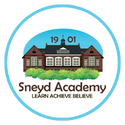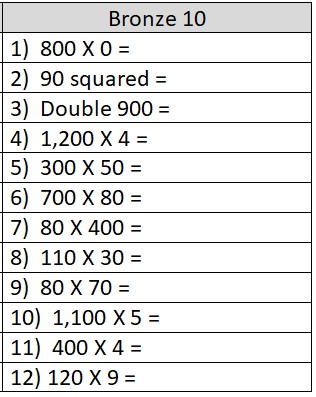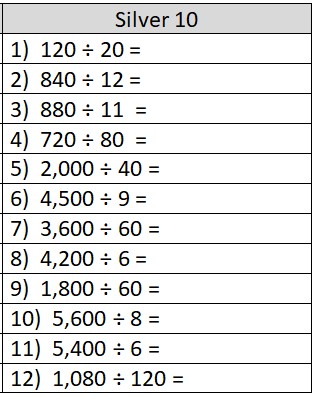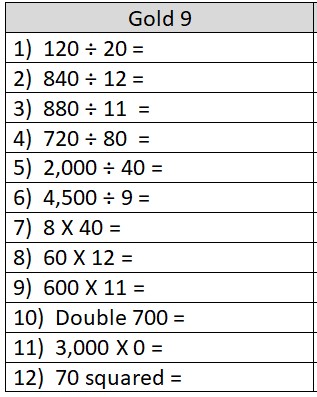Year 5 Mathematics
Curriculum Overview
The mathematics curriculum in Year 5 extends to teaching competent understanding and use of numbers to 100,000. Formal calculations are further developed for all four operations (addition, subtraction, multiplication and division.) By the end of Year 5 children will be able to add and subtract 5 digit numbers (including decimals), divide 5 digit numbers by one digit numbers and multiply five digit numbers by one digit numbers (including decimals.) The Year 5 curriculum allocates a significant amount of time to developing children’s understanding of fractions, decimals and percentages and the relationship between them. In Year 5, children are introduced to the concepts of prime, squared and cubed numbers for the first time.
Multiplication tables knowledge is consolidated and further extended in Year 5 with our Marvellous Multiplication system extending to teach children to apply simple tables knowledge to tackle derived facts mentally such as 110 x 30, double 900 and 300 squared.
Below are the National Curriculum objectives which are covered in Year 5.
Year 5 Statutory Requirements
|
NUMBER – NUMBER & PLACE VALUE
- Read, write, order and compare numbers to at least 1 000 000 and determine the value of each digit
- Count forwards or backwards in steps of powers of 10 for any given number up to 1 000 000
- Interpret negative numbers in context, count forwards and backwards with positive and negative whole numbers, including through zero.
- Round any number up to 1 000 000 to the nearest 10, 100, 1000, 10 000 and 100 000
- Solve number problems and practical problems that involve all of the above
- Read Roman numerals to 1000 (M) and recognise years written in Roman numerals.
|
NUMBER – ADDITION & SUBTRACTION
- Add and subtract whole numbers with more than 4 digits, including using formal written methods (columnar addition and subtraction)
- Add and subtract numbers mentally with increasingly large numbers
- Use rounding to check answers to calculations and determine, in the context of a problem, levels of accuracy
- Solve addition and subtraction multi-step problems in contexts, deciding which operations and methods to use and why.
|
NUMBER – MULTIPLICATION & DIVISION
- Identify multiples and factors, including finding all factor pairs of a number, and common factors of two numbers
- Know and use the vocabulary of prime numbers, prime factors and composite (non-prime) numbers
- Establish whether a number up to 100 is prime and recall prime numbers up to 19
- Multiply numbers up to 4 digits by a one- or two-digit number using a formal written method, including long multiplication for two-digit numbers
- Multiply and divide numbers mentally drawing upon known facts
- Divide numbers up to 4 digits by a one-digit number using the formal written method of short division and interpret remainders appropriately for the context
- Multiply and divide whole numbers and those involving decimals by 10, 100 and 1000
- Recognise and use square numbers and cube numbers, and the notation for squared (2) and cubed (3)
- Solve problems involving multiplication and division including using their knowledge of factors and multiples, squares and cubes
- Solve problems involving addition, subtraction, multiplication and division and a combination of these, including understanding the meaning of the equals sign
- Solve problems involving multiplication and division, including scaling by simple fractions and problems involving simple rates.
|
NUMBER – FRACTIONS (including decimals and percentages)
- Compare and order fractions whose denominators are all multiples of the same number
- Identify, name and write equivalent fractions of a given fraction, represented visually, including tenths and hundredths
- Recognise mixed numbers and improper fractions and convert from one form to the other and write mathematical statements > 1 as a mixed number [for example, 2/5 + 4/5 = 6/5 = 1 1/5]
- Add and subtract fractions with the same denominator and denominators that are multiples of the same number
- Multiply proper fractions and mixed numbers by whole numbers, supported by materials and diagrams
- Read and write decimal numbers as fractions [for example, 0.71 = 71/100]
- Recognise and use thousandths and relate them to tenths, hundredths and decimal equivalents
- Round decimals with two decimal places to the nearest whole number and to one decimal place
- Read, write, order and compare numbers with up to three decimal places
- Solve problems involving number up to three decimal places
- Recognise the per cent symbol (%) and understand that per cent relates to ‘number of parts per hundred’, and write percentages as a fraction with denominator 100, and as a decimal
- Solve problems which require knowing percentage and decimal equivalents of ½, ¼, 1/5, 2/5, 4/5n and those fractions with a denominator of a multiple of 10 or 25.
|
MEASUREMENT
- Convert between different units of metric measure (for example, kilometre and metre; centimetre and metre; centimetre and millimetre; gram and kilogram; litre and millilitre)
- Understand and use approximate equivalences between metric units and common imperial units such as inches, pounds and pints
- Measure and calculate the perimeter of composite rectilinear shapes in centimetres and metres
- Calculate and compare the area of rectangles (including squares), and including using standard units, square centimetres (cm2) and square metres (m2) and estimate the area of irregular shapes
- Estimate volume [for example, using 1 cm3 blocks to build cuboids (including cubes)] and capacity [for example, using water]
- Solve problems involving converting between units of time
- Use all four operations to solve problems involving measure [for example, length, mass, volume, money] using decimal notation, including scaling.
|
GEOMETRY – PROPERTIES OF SHAPES
- Identify 3-D shapes, including cubes and other cuboids, from 2-D representations
- Know angles are measured in degrees: estimate and compare acute, obtuse and reflex angles
- Draw given angles, and measure them in degrees (˚)
- Identify:
- angles at a point and one whole turn (total 360˚)
- angles at a point on a straight line and a turn (total 180˚)
- other multiples of 90˚
- Use the properties of rectangles to deduce related facts and find missing lengths and angles
|
GEOMETRY – POSITION & DIRECTION
- Identify, describe and represent the position of a shape following a reflection or translation, using the appropriate language, and know that the shape has not changed.
|
STATISTICS
- Solve comparison, sum and difference problems using information presented in a line graph
- Complete, read and interpret information in tables, including timetables.
|
White Rose
As an academy we structure the delivery of the national curriculum in the order set out by the White Rose and we use a great many of their resources such as the ‘small steps’ to support this delivery. The timetable shows the order in which units of work are taught. Please click here.
Marvellous Multiplications
The Marvellous Multiplication system is a structured system that we use at Sneyd Academy to support children in learning multiplication tables by heart. The system uses a variety of active teaching techniques alongside regular opportunities to rehearse multiplication tables so children become familiar with all multiplication and division facts for each multiplication table. By the end of Year 5 children are expected to know the multiplication and division facts for the 10, 5, 2, 3, 4, 6, 8, 7, 9, 11 and 12 times tables by heart. They should be able to recall these facts confidently and quickly and apply them accurately in a range of mathematical contexts.
Marvellous Multiplications are tested each week within Big Maths sessions. Examples of tests for Year 5 children are below. Children are given 60 seconds to complete each test and apply their knowledge of multiplication tables to derive the answers from known facts.




